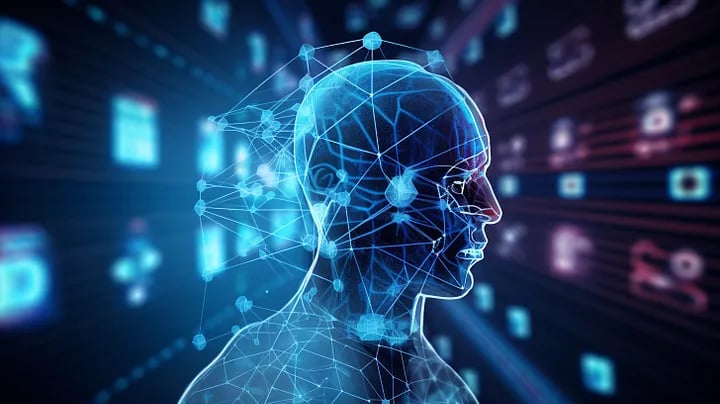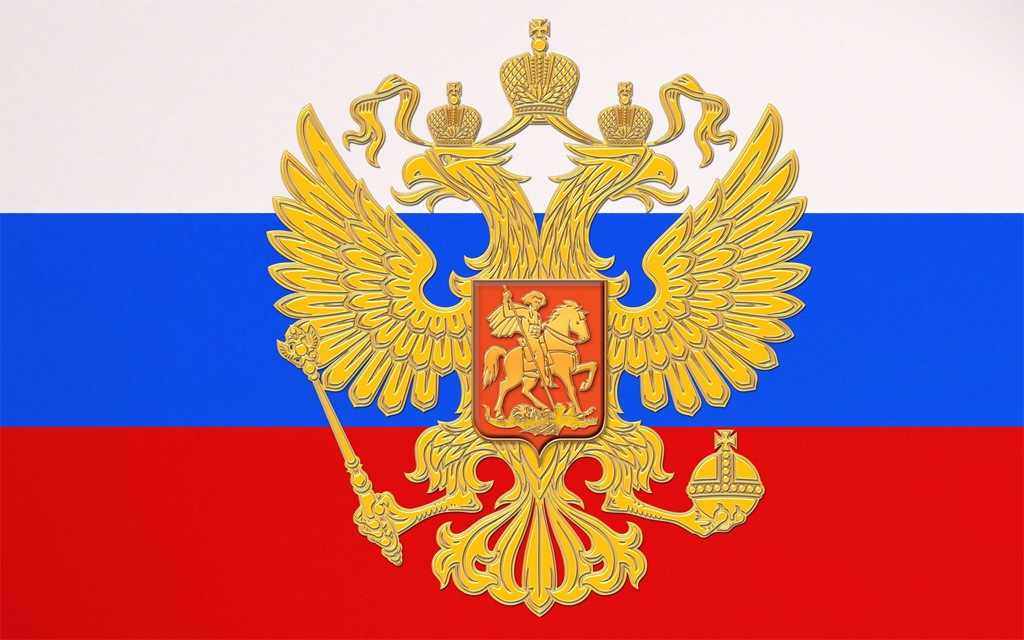The Role of Artificial Intelligence in fine Art at Tunisian Schools: A sociological field study in rural schools in southern Tunisia

Prepared by the researche : Dr. Hussein Al-Saeedi – Higher Institute of Arts and Crafts of Tataouine,) Department of Anthropology( / University of Gabes
Democratic Arabic Center
Journal of cultural linguistic and artistic studies : Thirty-sixth Issue – June 2025
A Periodical International Journal published by the “Democratic Arab Center” Germany – Berlin
Journal of cultural linguistic and artistic studies
:To download the pdf version of the research papers, please visit the following link
Abstract
This study highlights the role of artificial intelligence (AI) in visual arts, its early applications, and the types of techniques such as drawings and various programs and applications that support users (teachers and students) in creating and generating artworks. It also explores how AI capabilities can be utilized to improve and assist students by opening up different and highly precise ideas, keeping pace with modern technological advancements. Additionally, the study delves into image recognition technology and the relationship between creativity and AI, particularly through the integration of AI into visual arts within the context of contemporary technological developments.
- Introduction:
The field of education has witnessed rapid transformations in recent years due to accelerated technological advancements, most notably the emergence of artificial intelligence (AI). AI possesses immense capabilities to bridge knowledge gaps and enhance teaching and learning methods, particularly for art education teachers. This is achieved by leveraging digitization skills and AI through various contexts, such as idea generation, lesson planning, test preparation, and student evaluation. However, it is evident that this technology might negatively impact the teaching and learning process in some marginalized border schools in southern Tunisia, particularly in art education curricula.
From this perspective, this article sheds light on the role of AI in education, its impact on the learning process—especially in the field of technical education—and highlights the key advantages and benefits of using AI to meet learners’ needs.
- Research Questions:
- To what extent are art education teachers in these rural schools familiar with digitization and artificial intelligence skills in art education curricula?
- To what extent are art education teachers knowledgeable about the applications and programsof digitization and artificial intelligence in art education curricula?
* Concepts:
- The Concept of Artificial Intelligence:
Artificial intelligence (AI) refers to a set of new methods and approaches in programming computational systems that simulate certain elements of human intelligence. These systems enable inferential processes based on facts and laws represented within a computer’s memory.
AI is defined as a machine or computer program that employs human intelligence to complete tasks such as planning, learning, understanding, reasoning, problem-solving, and predicting. With the growing focus on AI and machine learning in recent years, various tools and applications have emerged. These systems perform highly advanced processing of vast amounts of data—words, information, and images—based on descriptive inputs provided by users. These tools then generate high-quality artistic designs and suggestions without requiring users to have prior expertise or technical skills. This represents a true revolution in the world of design and artistic creativity.
Digital art involves the process of creating artwork using electronic tools and specialized applications instead of traditional methods involving pens, colors, and paper. Devices such as tablets and computers are used alongside basic electronic tools like a mouse or a digital pen.
According to Abdullah Al-Shaer (2010, p. 11), digital art is defined as “art created digitally via computers, including images captured by scanners or those drawn using design software.”
- Artificial Intelligence and Its Contribution to Education
The world is currently experiencing rapid advancements and an increasing application of artificial intelligence (AI) systems across various fields. The use of AI technologies is no longer confined to manufacturing or service delivery; it extends to enhancing and developing education in terms of methods and tools. Education is among the most significant fields witnessing a growing adoption of AI applications, offering vast potential for further development and integration in the future.
- Advantages of Artificial Intelligence in Education
Experts agree on the significance of artificial intelligence (AI) in 21st-century education due to its numerous benefits, including:
- Comprehensive Capabilities: AI has the ability to learn, organize, and comprehend knowledge, analyze language, understand speech, interpret images and videos, solve problems, foster creativity, handle emotional and social interactions, operate robots, and perform general intelligence tasks—all simultaneously.
- Enhanced Learning Experience: AI explains educational content and provides instant feedback on students’ answers.
- Academic Guidance: It offers academic advice to students, helping them choose the most suitable college departments or study subjects that match their cognitive abilities.
- Inclusivity: AI makes classrooms accessible to a larger audience, including those who speak different languages or have hearing impairments.
- Predictive Analytics: By analyzing data, AI identifies students at risk of failure and enables institutions to intervene early and effectively.
- Administrative Efficiency: AI can be employed in administrative and organizational tasks, such as answering student inquiries through AI-powered chatbots.
- Efficient Information Access: It helps students quickly find information from a centralized source.
- Time-Saving: AI reduces the workload of teachers and administrators by automating routine tasks.
- Data Utilization: It gathers vast amounts of data to train machine learning systems, leading to the development of personalized educational programs and improved student experiences.
- Problem-Solving Efficiency: AI solves problems more effectively, even with incomplete data.
- Modern Learning Alternatives: It provides alternatives that prepare students for facing challenges and adapting to modern technologies.
- Customized Feedback: AI presents questions tailored to reveal individual students’ weaknesses and cognitive readiness while tracking their learning styles.
- Learning through Trial and Error: AI fosters an environment where students feel less apprehensive about making mistakes, as trial and error are essential parts of learning.
- Flexible Learning: Students can learn from anywhere in the world at any time. (Hana, 2021)
- The Role of Teachers in Artificial Intelligence
The standards of the International Society for Technology in Education (ISTE) encourage teachers to set goals for teaching their students practices such as innovation, redesign, and problem-solving. Achieving these goals will establish a solid foundation for students to work effectively with artificial intelligence (AI).
AI will transform the teacher’s role to become more comprehensive, shifting its practical and educational value. Teachers will focus more on the social dimension, an aspect machines cannot and will not replace. The essence of perseverance and motivation in schools for many learners remains rooted in human interaction and connection.
Moreover, AI will provide tools that enable teachers to perform their roles more effectively and with less effort. It will supply all the necessary information for evaluating and improving both the teacher’s and the students’ performance efficiently and quickly. (Hana, 2021)
- Research Objectives:
- To assess the extent to which art education teachers in some marginalized border schools are familiar with digitization and artificial intelligence skills within art education curricula.
- To evaluate the ability of art education teachers in rural schools to utilize applications and programs of digitization and artificial intelligence in visual arts education curricula.
- Significance of the Research:
- Highlighting the importance of digitization and AI applications in art education curricula as one of the contemporary artistic trends, particularly in some rural schools.
- Emphasizing the potential of using simple and 3D drawing and coloring programs to work with various materials.
- Shedding light on the significance of digital art and its applications in education and visual arts education at different primary education levels.
- Keeping pace with the Ministry of Education’s efforts to develop art education curricula and teaching methods in border schools by utilizing modern strategies to enhance AI skills in the context of rapid digital and technological transformation.
- Recognizing that digital transformation in education is not merely a technical process but a key element in facilitating desired educational changes and achieving future competencies. Digitization in education enables the application of principles such as personalized learning, self-directed learning, teamwork, the practical application of new knowledge, and fostering collaborative participation. This includes accepting peer feedback, engaging in group projects, and producing shared knowledge and solutions, all while integrating technology into educational programs.
- Scope of the Research:
- A group of art education teachers in rural schools in southern Tunisia.
- Digitization and AI applications in visual arts curricula.
- The academic year 2024/2025.
- Research Methodology and Tools:
The researcher used the descriptive-analytical method, employing a questionnaire directed at art education teachers regarding digitization and AI applications in the development of visual arts curricula.
- Sample of the Research:
The sample consists of 10 teachers from the Medenine governorate, including 5 from rural schools, and 10 teachers from the Tataouine governorate, including 8 from rural areas. The aim of the questionnaire is to gather the opinions of art education teachers about digitization and AI applications in developing visual arts curricula in primary education. The questionnaire includes a variety of closed and open-ended questions, such as: - How do you evaluate the importance of digitization and AI applications in developing visual arts curricula?
- To what extent is digitization and AI applications important for improving the quality of education?
- How important are AI applications in increasing creativity and innovation among students?
- Do digitization and AI applications help connect students with global culture and art?
- Do AI applications assist in developing teaching methods and artistic educational activities?
- To what extent is it possible to use virtual reality in teaching visual arts in rural schools?
- To what extent is it possible to use AI in creating interactive digital educational content in the arts?
- What are the areas where digitization and AI applications are used to develop visual arts curricula in your school?
- To what extent are teachers trained to use digitization and AI applications in art education?
- How are digitization and AI applications used to enhance students’ interaction with visual arts educational content?
- What is the importance of using digitization and AI applications in improving communication and interaction skills between teachers and students?
- What are the key barriers that hinder the use of AI applications among students?
- What challenges do you face in using digitization and AI applications to develop visual arts curricula?
- What suggestions can contribute to enhancing the use of digitization and AI applications in developing visual arts curricula?
| nber | Form results | Very important
|
important | Not
important |
| 1 | What is your assessment of the importance of digitization and artificial intelligence applications in developing art education curricula in rural schools? | 0% | 40% | -60% |
| 2 | How important is digitization and artificial intelligence applications in improving the quality of technical education? | 0% | 15% | 70% |
| 3 | How important are artificial intelligence applications in increasing students’ creativity and innovation? | 0% | 30% | -70% |
| 4 | Do digitalization and artificial intelligence applications help connect students to global culture and arts? | 0% | 20% | -80% |
| 5 | Do artificial intelligence applications help develop teaching methods and artistic educational activities? | 0% | 25% | 75% |
| 6 | To what extent is it possible to use virtual reality in teaching art education? | 0% | 0% | 0% |
| 7 | To what extent can artificial intelligence be used to evaluate students’ artistic skills? | 0% | 15% | 85% |
| 8 | To what extent can artificial intelligence be used to create interactive digital art educational content? | 0% | 30% | -70% |
| 9 | What are the areas of using digitization and artificial intelligence applications in developing art education curricula? | 0% | 40% | 60% |
| 10 | How important is it to train teachers to use digitalization and artificial intelligence applications in the fields of art education? | 0% | 10% | -90% |
| 11 | To what extent are digitization and artificial intelligence applications used to improve students’ interaction with educational artistic content? | 0% | 5% | -95% |
| 12 | What is the importance of using digitization and artificial intelligence applications in improving communication and interaction skills between teachers and students? | 0% | 10% | -90% |
| 13 | What is the importance of artificial intelligence applications in increasing students’ motivation for artistic creativity? | 0% | 5% | 95% |
| 14 | What are the challenges facing the use of digitization and artificial intelligence applications in developing art education curricula? | 0% | 10% | -90% |
| 15 | What are the proposals that contribute to enhancing the use of digitization and artificial intelligence applications in developing art education curricula? | 0% | 25% | 75% |
Questionnaire Data Analysis
)Questionnaire data analysis graph(
- Research Findings:
This study addressed the role of digitization and AI applications in developing visual arts curricula in rural schools. The results of the survey indicated that art education teachers believe digitization and AI applications play a very important role in today’s era. They could help in the development of visual arts curricula, improve overall educational quality, and increase student interaction with the educational content. However, the state’s role in providing the necessary infrastructure for fiber optics remains weak, which limits the ability to enhance critical and creative thinking skills through AI applications in certain schools.
The questionnaire highlighted several challenges that may face the use of digitization and AI applications in developing visual arts curricula, including a lack of financial and human resources, the difficulty of digital transformation, resistance to change by teachers, and the absence of fiber optics in some rural schools. The survey also provided suggestions to enhance the use of digitization and AI applications in visual arts curricula development.
The findings revealed a total lack of digitization in many of these schools, highlighting the importance of digitization and AI applications in improving visual arts curricula, enhancing educational quality, fostering creativity and innovation, and connecting students with global culture and art. The results also suggested that AI applications could aid in developing teaching methods and artistic educational activities, creating educational content, utilizing virtual environments, and assessing students’ artistic skills.
Moreover, the results emphasized the importance of training art teachers on digitization and AI applications and their integration into visual arts education. AI has become an integral part of the educational process in many developed countries and is essential for the advancement of teaching and curricula development. One of the main benefits of AI in education is making the learning process more enjoyable for students, increasing their motivation and desire for knowledge. Traditional educational methods can often be monotonous, whereas digital learning tools enhance the overall enjoyment and engagement.
Most teachers confirmed that using AI in education makes the process easier and contributes to a more successful and advanced educational experience. AI enables students to ask questions and inquire more effectively, and it can help overcome learning difficulties such as issues with writing, reading, and hyperactivity. As curricula become more challenging, AI programs can adapt to the learning pace and needs of each student individually, helping to address differences among learners and allowing teachers to tailor their pace accordingly.
However, the key barriers in rural schools remain infrastructure and fiber optics, as pointed out by many respondents. This study recommends that attention be given to modern technological advancements in developing visual arts curricula and teaching methods in rural schools, promoting positive attitudes toward digital art education, establishing electronic art libraries, and activating online art platforms to enhance creativity in these regions.
- Recommendations and Proposals for the Research:
- Ensure the provision of technological stations and the availability of fiber optics.
- Organize specialized training courses for visual arts teachers at various educational levels to train them in digital art practices and AI applications in visual arts education.
- Incorporate AI skills, digital art concepts, and related programs and tools into the teacher preparation programs for visual arts educators.
- Provide training for visual arts teachers on how to effectively integrate AI applications into the educational process and the field of visual arts.
- Include digital art concepts and AI applications in visual arts curricula at various educational stages.
- Encourage researchers to focus on studying the fields of digital art and AI applications in education and visual arts education.
- Publish periodic bulletins to inform visual arts teachers about the latest developments in digital art and AI applications.
- Employ modern strategies to develop digital skills and AI competencies in the field of visual arts education.
These recommendations aim to enhance the integration of AI and digital art technologies in the education system, especially in rural schools, to improve teaching methods, foster creativity, and provide students with a more interactive and modern learning experience.
- Conclusion:
Smart education has today become a software system that incorporates various educational processes powered by artificial intelligence (AI). The intelligent system tracks the activities of learners, guiding them continuously by collecting sufficient data about each learner’s performance. Smart teaching can highlight each student’s strengths and weaknesses and provide timely support. While there are countless examples of intelligent education systems, the main issue remains the lack of state support and the infrastructure in some rural schools. It is crucial to recognize that AI has revolutionized modern education. Its use is essential for effective learning. AI supports adaptive learning by addressing the needs, preferences, and individual differences of students, making learning more efficient and engaging. Furthermore, AI enables assessment and grading, using machine learning algorithms to evaluate student performance and provide feedback, making the process more accurate and objective.
- References:
- Shahat, Nashwa Rifaat (2022). “The Use of Artificial Intelligence Applications in the Educational Process.” Faculty of Education, University of Damietta, Egyptian Journal of Educational Computing, Vol. 10, No. 2, Series No. 20, December 2022, pp. 205-214.
- Hassan, Ismail Yassin (2023). “Artificial Intelligence in Education.” Retrieved on 20/12/2023 from the following site: https://2u.pw/RQYdpcm.
- Saudi Data and Artificial Intelligence Authority (2023). “Generative Artificial Intelligence in Education,” Generative AI Series (2), Kingdom of Saudi Arabia.
- Hanaa, Mohamed Rizk. “AI Systems and the Future of Education,” Studies in University Education, 52.
* Foreign References:
- Azimah, D., Putih, A. & Hussin, Z. (2016). Digital tools: enhancing.
- painting skills among Malaysian secondary school students. TOJET: the Turkish online journal of educational technology.
- Damsen, J.(2007). The Media Mural Project: Empowering Youth in New Mass Media, Journal for Learning through the arts.
- Zhu Dafa. (2013). On the relationship between traditional painting and digital painting, Journal of Hubel University of Finance, (10),(Humanities and Social Sciences).




